By the beginning of May, brand new locomotives will be hauling passenger trains from London Marylebone in squadron service. The new Class 68s were not specifically designed for the Chiltern Railways contract, but are now taking over trains on that line.
The locomotives started to arrive in the UK from January last year - currently there are 15 in the country with a further ten on order. Built in Spain by Vossloh, they are owned by Beacon Rail and leased by Direct Rail Services, which ordered the locomotives in 2012. They were designed to be multi-purpose, able to haul both heavy freight and passenger trains.
The ‘68s’ have replaced Class 67s, which were also built in Spain (in the same factory in Valencia, albeit under sub-contract from General Motors).
CR signed a deal one year ago to use the ‘68s’ on its ‘Mainline’ services, hauling its ‘Silver sets’ of Mk 3s. The deal was signed before the locomotives were delivered, and so 68010-68015 were constructed in Spain and painted in CR’s silver livery. They were delivered last summer and initially deployed by DRS on various duties.
Chiltern began phasing them into traffic from December (RAIL 764), and was the first train operating company (TOC) to use them on passenger trains. Two had been used on trains running to the Ryder Cup golf tournament in Scotland last September (RAIL 758), but these were only open to those with tickets to the event. The CR trains were the first daily public trains.
CR Operations and Safety Director Andrew Munden meets RAIL to discuss the locomotives. And he starts with a bit of history:
“The Wrexham, Shropshire and Marylebone Railway started to operate Class 67s and Mk 3s back in 2008. By about 2010, they realised that they had an over-provision of resources. So Chiltern began to use one of the spare Wrexham & Shropshire sets on the occasional Birmingham train.
“When Wrexham were setting up their operation, Class 67s were the only viable form of traction that met their needs.” (By this, he means the length of train - WSMR sets were typically three or four Mk 3s and a Driving Van Trailer, hauled or propelled by a ‘67’.)
Munden continues: “Wrexham and Shropshire ceased operations in January 2011. And Chiltern, as part of the same owning group, took on its assets. The Mk 3s and the DVTs were all owned by Arriva. So Chiltern obviously identified these as a good form of train on the soon-to-be-introduced main line train services to Birmingham.”
He says that Chiltern’s passengers enjoyed the type of passenger experience the Mk 3s offered - tables, legroom, windows that align with seats, and the opportunity to carry out work on the move.
“When you look at Chiltern’s business case, we can never beat Virgin in terms of journey time. We’re not far off it, but we can never match them. So for us, it’s about making sure that we can offer what the customer needs.
“They want vehicles where you can have tables, they want vehicles where the seats are aligned with windows, they want power sockets for all manner of laptops and mobile phones and stuff, and they want free WiFi.
“So we offer a journey experience that is productive. If you choose to travel with us as a business, you can use your time. It’s a lot easier than my experiences of trying to work off a laptop on a Pendolino - airline-style seating with a flip-down table.”
He continues: “Mainline went live in September 2011. Since then we’ve lengthened the sets, so we started off with four TSOs , plus the GFW , plus the DVT . We’ve since lengthened those to six vehicles, back in 2012.”
Munden says that in 2012, Chiltern even briefly lengthened the blue and grey set to seven vehicles. He says they are slightly lighter, because they do not have the modifications that the ‘Silver sets’ do.
“It was quite evident that a ‘67’, particularly on some gradients through the Chilterns, is working flat out. We knew also that the lease with DB Schenker was due for expiry.
“So looking ahead in business terms, we thought we ought to explore what else the rolling stock market has out there. Even though we’re part of DB, it was by no means certain that the locomotives would be available to us for future lease or some lease.
“We started a procurement exercise probably two years ago now, to explore what might be out there. I think we had expressions of interest from about 12 different companies, and we ended up with serious bids from two.
“It was at a time that DRS had authorised the ‘68s’. And actually, when you look at them, the ‘68’ does offer benefits that the ‘67s’ can’t.”
Munden elaborates: “The ‘67’ was designed primarily for hauling lightweight mail trains very quickly - 125mph capability, albeit it’s a 90-tonne locomotive. Of course, it’s a two-stroke diesel, and although the engine itself is an inherently reliable bit of kit, any two-stroke is going to be more fuel-hungry. They have stickers in the cabs that say if you use power notch 8 in them, you use something like an extra 280 litres of fuel an hour.”
However, Munden adds that the only way the ‘67s’ can keep to time is to be in notch 8 a lot.
“So in fuel terms they are expensive. But that just comes with the nature of the power unit that’s fitted in them. And their tractive effort is actually pretty low. I think their constant power at rail is not a lot more than a Class 31.”
He explains that they are not, it seems, that strong either. “They were designed for a very specific purpose. So the continuous tractive effort is only 20,200 pound foot, or 90 kilonewtons if you’re metric. Whereas a ‘31’, for example, its continuous tractive effort is 83 kilonewtons. In fact, the maximum tractive effort of a ‘31’ is 35,900 pound foot, or 160 kilonewtons, and the Class 67 is only 141 kilonewtons or 31,770 pound foot. So in terms of maximum tractive effort, on paper they’re weaker than a Class 31.”
It was these considerations that led CR to look at other options. “The offer that we had for the Class 68s, which was still on the drawing board at that time, was for a locomotive that’s 100mph. But so is our route, and there was no real business case to upgrade the Chiltern Main Line above 100mph. That was looked at very carefully as part of the Evergreen project, and dismissed because it would only have saved a few minutes here or there.”
He elaborates on the infrastructure. “When you tip over from 100mph unit to different track quality category, so that leads to additional Network Rail maintenance, which pushes up costs. So they have the maximum speed we need, but in terms of tractive effort they’re much stronger.
“Ultimately, given the success of our main line product, in years to come we will probably want to look at putting a seventh vehicle into the formation. When we tried it with the blue/grey set, climbing the bank from Princes Risborough from a standing start up to Saunderton, the locomotive was really, really struggling in notch 8. The ‘67s’ also have a fairly low rate of acceleration, so our fastest Birmingham-London journey time is 94 minutes.
“Obviously journey time is a key factor for us in being as competitive with Virgin as we can, so that led to the issue where we need to maintain an end-to-end journey time. But that leads to a trade-off between station dwells and sectional running times.”
Munden says that since CR Mk 3s were fitted with power doors, it has been easier to manage dwell times.
“With our passenger loadings, especially through the South Midlands at stations like Solihull in the morning, you will not get away in under two minutes. In order to make performance more robust, we need to be able to shorten the sectional running times to be able to give us the required dwells.
The ‘68s’ accelerate like a DMU, effectively. Their acceleration is phenomenal. And we’re already seeing ‘68s’ beating ‘67’ sectional running times. On the first day back in December when a ‘68’ went on a passenger set, from a standing start at Princes Risborough, the train passed over Saunderton summit a minute and a half faster than the equivalent ‘67’ would have done.”
He says that at the moment there isn’t a plan to try and shorten the overall journey time, but for the dwell times to be improved.
Reliability is also important for CR. The Class 67s were achieving 12,000 Miles per Technical Incident Number (MTIN), while the Moving Annual Average (MAA) sits in the 6,000 to 7,000-mile category.
But Munden reports: “With the ‘68s’, we have a contractual target with DRS to deliver 33,000 MTIN. In the first two months of operation this year, bearing in mind this is a new locomotive fresh out of the box, they’ve been achieving about 24,000. The only one that I can think of that’s been comparable in terms of straight out the box are probably Hitachi’s ‘395s’.”
CR carries out A-exams on the locomotives, while DRS performs all other work at Crewe. “We basically fill them up with fuel, charge the batteries, do the A-exam, and that’s about it. DRS does the rest.”
The lease for six locomotives (68010-68015) lasts until 2021. Two more (68008 Avenger and 68009 Titan) have been modified with AAR push-pull equipment to work with CR’s trains. The plan is to have five in traffic per day.
Says Munden: “Interestingly, we generally have six ‘67s’ on the patch at any given time. We think we need fewer ‘68s’. The mileage between exams is longer than the ‘67s’, therefore they should be off the patch less often.”
Is this because the ‘67s’ are older?
“I guess so. The ‘67s’ are 15 to 16-year-old technology now. These aren’t. So yes, all the early reliability stuff has far exceeded our wildest hopes, which is good.”
Have any faults been discovered on the ‘68s’?
“I think there’s been a few minor teething things with some. A data card they found had to be replaced. But apart from that they’ve hit the ground running.
“When you look at it, they are a fantastically well thought-out and designed piece of kit. The build quality is exceptionally good. They came from the same plant as the ‘67s’, and they feel like a quality product when you get in them.
“I think the only change we had made to them - and I do mean literally the only change - we’ve changed the hand rails, because the originals proved to be a bit slippery in the wet. So we are in the process of having them photo-etched just to give them a bit more grip. That’s about as exciting as it gets!”
Munden says his drivers were involved in some of the modifications.
“My drivers went up to Crewe to look at things like the positioning, the forward-facing CCTV cameras, and we got the TTG DAS (Driver Advisory System) fitted on our rolling stock, so they went up to Crewe to agree where the DAS unit was going to be positioned. But other than that, they came out of the box as far as we were concerned. You can see they’re ergonomically very good.
“We’ve even gone so far as the locomotives are in our grey and silver livery. And if it works out right, which is doesn’t always for the ‘67s’, it should have the dark grey outer ends on the back, so the DVT and the locomotive ends are symmetrical. So in theory that will always be the leading end, which is where some of the cab changeover controls are. So you don’t have to walk right through the locomotive to operate some of the changeover controls at the end of the journey.”
Luckily, the recent landslip at Harbury (RAIL 768) didn’t affect driver training, despite the Chiltern Main Line being closed for several weeks.
“We’ve had training going on at both ends of the patch, so we’ve had ‘68s’ based at Stourbridge and ‘68s’ based at Wembley. It’s an eight-day conversion course, so that’s a mixture of static training in the depot on faults and failures, training for drivers in the depot environment, and main line training.
“I think we lost three groups of training because of Harbury, so we probably slipped by about a week and a half. And the way we use it, the London drivers use the blue/grey set on its Banbury turns for their handling training, and the Stourbridge and Birmingham guys use the set when it runs empty during the day. It’s worked really well. And thanks to our drivers and their general ‘can-do’ attitude, we hardly lost anything on the training. It’s really pleasing.”
In the future, Munden says improvements will be dictated by business requirements.
“At the moment, capacity’s OK on those trains. We’ll obviously change the timetable in September when Oxford opens. There will be a silver set going down to Oxford and back every day. From September it will be starting from Oxford Parkway. So there’ll be one Up in the morning, one back Down in the evening, which I think has a 58-minute journey time from Oxford Parkway.”
The Class 68s are taking over, and their performance is to be admired. I travelled in the cab of 68012 on March 26, on the 1750 London Marylebone-Banbury, and found the acceleration to be impressive - it reached 100mph at milepost 19 rather than milepost 22 as per the Class 67s.
When accelerating, the level of sound from the engine room remains almost the same, making it hard to actually figure out when the locomotive is accelerating.
Ride quality is also smooth. The Chiltern Main Line may have been upgraded in recent months and years, but there are still areas where the ride quality is not to an exacting standard. And yet the ‘68’ almost glides along.
Additionally, each station stop is longer than usual due to early arrivals, and the train is held outside Banbury due to the early arrival. This is common, says Munden.
It’s not hard to see why CR is so impressed with the ‘68s’. The Class 67s have performed well on the Chiltern route, but now the ‘68s’ are here to take performance to a new level. And they are already off to a good start.
- This feature was published in RAIL 773 on April 29 2015

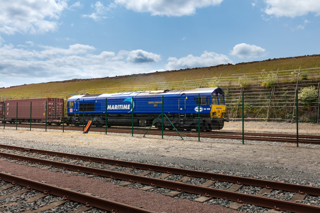
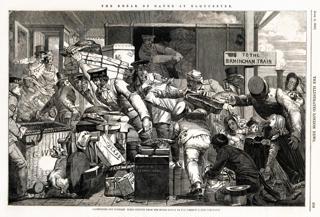
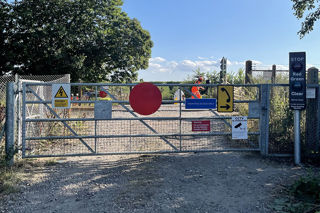
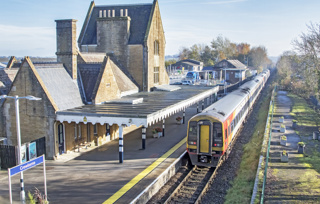
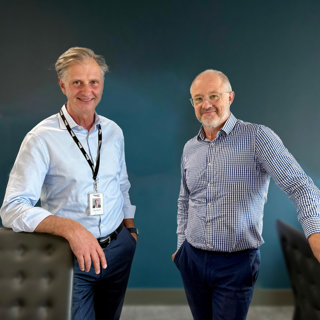

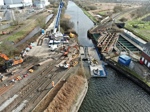









Login to comment
Comments
No comments have been made yet.